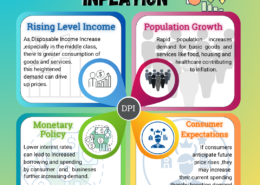India has made notable progress in a number of development metrics, including economic growth, the education of women, and childbearing rates. The nation still has one of the lowest rates of female labor force participation (FLFPR) in the world. Talk ...
Integrated Pest Management (IPM) is a holistic, science-based approach to managing pest populations in a manner that minimizes adverse effects on human health, the environment, and non-target organisms. Objectives of Integrated Pest Management are: Reduce Pest Populations: Maintain pest levels belowRead more
Integrated Pest Management (IPM) is a holistic, science-based approach to managing pest populations in a manner that minimizes adverse effects on human health, the environment, and non-target organisms.
Objectives of Integrated Pest Management are:
- Reduce Pest Populations: Maintain pest levels below those that cause economic or aesthetic damage.
- Minimize Environmental Impact: Implement practices that are safe for humans, beneficial organisms, and the ecosystem.
- Promote Long-term Solutions: Use sustainable methods to prevent future pest issues and reduce dependency on chemical pesticides.
- Enhance Economic Viability: Ensure pest management strategies are cost-effective and improve overall economic returns.
- Improve Pest Identification and Understanding: Develop better pest monitoring techniques and understand pest life cycles for more effective management.
- Encourage Stakeholder Participation: Engage farmers, land managers, and communities in pest management practices for a collaborative approach.
Components of IPM:
- Monitoring and Identification: Regularly check for pests and accurately identify them to determine if control measures are necessary.
- Prevention: Implement practices to reduce the risk of pest infestations, such as crop rotation, resistant plant varieties, and proper sanitation.
- Control Strategies: Utilize a combination of methods, including biological controls (natural predators), cultural controls (altering farming practices), physical controls (traps, barriers), and chemical controls (pesticides as a last resort).
- Evaluation: Assess the effectiveness of the pest management strategies and adjust as necessary for future management.
IPM is vital for sustainable pest management, balancing effectiveness with environmental and health considerations. In India, schemes like the National Mission on Agricultural Extension and Technology (NMAET) and acts such as the Insecticides Act, 1968, support IPM practices, reflecting its importance for agricultural development and sustainability.
See less

The ability of women to participate in the labour force is the outcome of various economic and social factors including educational attainment, fertility rate and the age of marriage, economic growth/cyclical effects, and urbanization. In the recent years, India has scored significant gains in someRead more
The ability of women to participate in the labour force is the outcome of various economic and social factors including educational attainment, fertility rate and the age of marriage, economic growth/cyclical effects, and urbanization. In the recent years, India has scored significant gains in some of these parameters, including:
However, the country’s Female Labour Force Participation Rate (FLFPR) remains amongst the lowest in the world. The FLFPR declined steadily from 47.1 percent in 1987-88 to 23 percent in 2017-18, reaching its lowest since Independence. While it rose to 32.5 percent by 2020-21, it is still far below the 77 percent for men. The reasons for the decline are as follows:
Measures to improve FLFPR in India:
To chart a gender-sensitive socio-economic development, the government, private sector, media, and the social sector need to work together to improve the working conditions of women, reduce wage gaps, increase opportunities for women across sectors, and bring about behavioural change in society.
See less